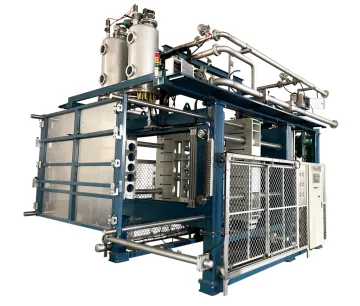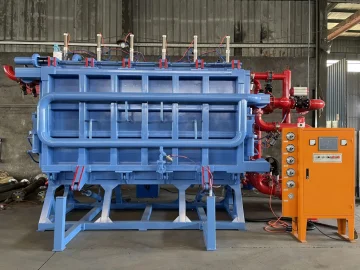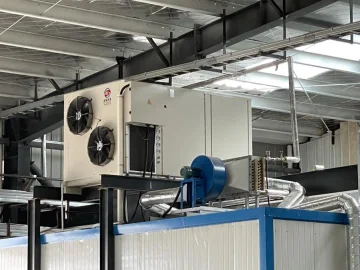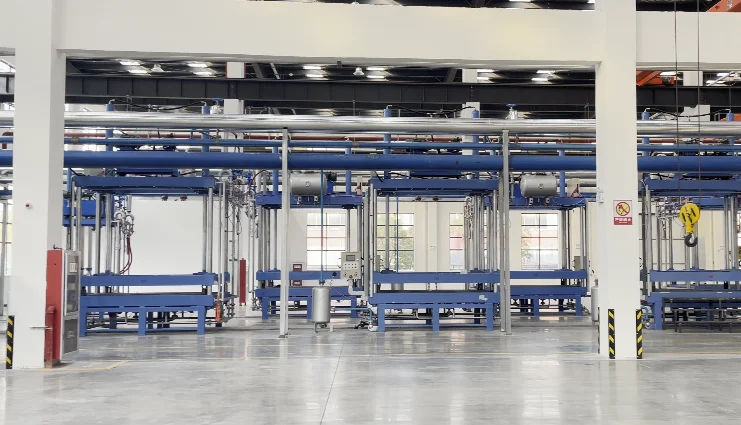Introduction to Full Mold and Lost Foam Casting
Casting is a key production technique. It involves pouring liquid material into a mold to form complex shapes. Two well-known methods in this field are full mold casting and lost foam casting. Although these approaches have some things in common, they also show clear differences suited to various industry needs. Knowing these distinctions helps in picking the right method for specific tasks.
Core Concepts and Definitions
Full Mold Casting
Full mold casting, sometimes called evaporative pattern casting, uses a polystyrene foam pattern. This pattern is placed in sand. It matches the shape of the final item exactly. When hot metal is poured in, the foam burns away. The metal then takes over the space left behind. This approach works well for making big, complex metal parts without needing cores or parting lines.
Lost Foam Casting
Lost foam casting is similar to full mold casting but has unique features. Here, a foam pattern gets a refractory coating before being set in sand. This coating adds strength during pouring. It also keeps the mold solid. Like full mold casting, the molten metal turns the foam to vapor, filling the space to create the shape. This technique stands out for crafting detailed designs with great accuracy in size.
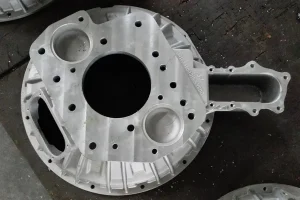
Process Comparison
Pattern Material Differences
In full mold casting, expanded polystyrene (EPS) is often the choice for patterns. It’s light and easy to shape. The foam patterns are typically made with CNC machines or molding methods to get exact sizes.
On the other hand, lost foam casting uses EPS too. But it adds a refractory coating to the pattern’s surface. This layer supports the pattern when handled. It also improves the surface smoothness by limiting metal seeping into the sand.
Mold Preparation
For full mold casting, the uncoated foam pattern goes straight into a flask with sand. The sand packs around it. This gives support when pouring happens.
In lost foam casting, the pattern gets a refractory coating first. Then it’s placed in a flask with loose sand around it. The coating shields the molten metal from the sand. This cuts down on flaws like sand mixing in and boosts surface quality.
Pouring and Solidification
In full mold casting, molten metal hits the uncoated foam directly during pouring. The foam vaporizes. Without a refractory layer, some roughness may show up because of metal and sand mixing.
In lost foam casting, the coated pattern reduces direct metal-sand contact. This leads to smoother surfaces. It also lowers the chances of issues like gas bubbles or trapped bits.
Material and Application Differences
Suitable Metals
Full mold casting works with many metals. These include aluminum alloys, cast iron, steel, and copper-based alloys. It handles bigger castings well, fitting heavy industries like automotive and machinery making.
Lost foam casting mostly suits non-ferrous metals like aluminum alloys. Their lower melting points match this method’s needs. Still, new progress has made it usable for ferrous metals too.
Typical Use Cases
Full mold casting often makes large parts like engine blocks, pump housings, or manifolds. Here, exact size might matter less than overall scale or complexity.
Lost foam casting shines in tasks needing detailed designs with tight limits. Examples include car engine parts like cylinder heads, artistic sculptures, or building features where fine detail stands out.
Both methods bring special strengths based on project needs. Understanding these differences lets makers choose the best process. This ensures good results and quality across many industries worldwide.
Advantages and Limitations
Full Mold Casting Pros/Cons
Full mold casting has several pluses, making it a top pick for certain jobs. A big perk is crafting large, complex metal parts without cores or parting lines. This cuts down steps and speeds up production. Plus, it saves money on tools and patterns, especially for small batches.
But it has downsides too. No refractory coating means surface roughness can happen from metal touching sand. Extra finishing might be needed for a smooth look. Also, gas getting trapped during pouring can lead to holes, affecting the final item’s strength.
Lost Foam Casting Pros/Cons
Lost foam casting is praised for its precision. It makes detailed designs with high size accuracy. The refractory coating on foam patterns boosts surface finish. It limits metal seeping into sand, giving smoother results and fewer flaws like gas holes or bits stuck inside. This suits jobs needing tight limits and fine detail.
Yet, it has cons. The process can cost more because of extra steps like coating and handling patterns. It demands careful control of things like coating thickness and drying time for best outcomes. Also, it fits non-ferrous metals like aluminum alloys better due to how it works.
Industry Trends and Innovations
Advances in Technology
The casting world keeps growing with new tech. It improves both full mold and lost foam casting. Automation and computer-aided design (CAD) have changed pattern-making. They bring more precision and speed to complex shapes. Better material science has also created advanced coatings. These improve surfaces and cut defect rates.
Plus, real-time tracking systems now join casting work. Makers can watch things like temperature and flow during pouring. This data-driven way boosts efficiency, cuts waste, and lifts quality.
Sustainability Efforts
Sustainability matters more in manufacturing, including casting. Both methods gain from efforts to lessen environmental harm. Recycling programs reuse sand and foam patterns. This lowers waste.
Research also looks at greener options for materials. For instance, biodegradable or recyclable foams might replace polystyrene patterns. These changes support bigger eco-goals. They promote resource use while keeping high production standards.
Hangzhou Ouchen Technology Co., LTD’s Role in the Industry
Lost Foam Casting Equipment Manufacturers
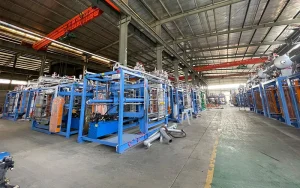
Hangzhou Ouchen Technology Co., LTD is a top name in high-end smart lost foam casting gear. As a major force in this field, Ouchen blends German EPS/EPP top tech with its own patents. It builds cutting-edge tools for both white (pattern-making) and yellow (mold-making) production zones. Ouchen’s products include advanced foam molding machines, pre-foaming machines, air dryers, foam sheet machines, central vacuum systems, and lift-type paint mixers.
For more details, contact Hangzhou Ouchen Technology Co., LTD:
Factory Address: Xindeng Town, Fuyang District, Hangzhou City
Tel: +86 15988479417
Email: zyh@oc-epc.com

